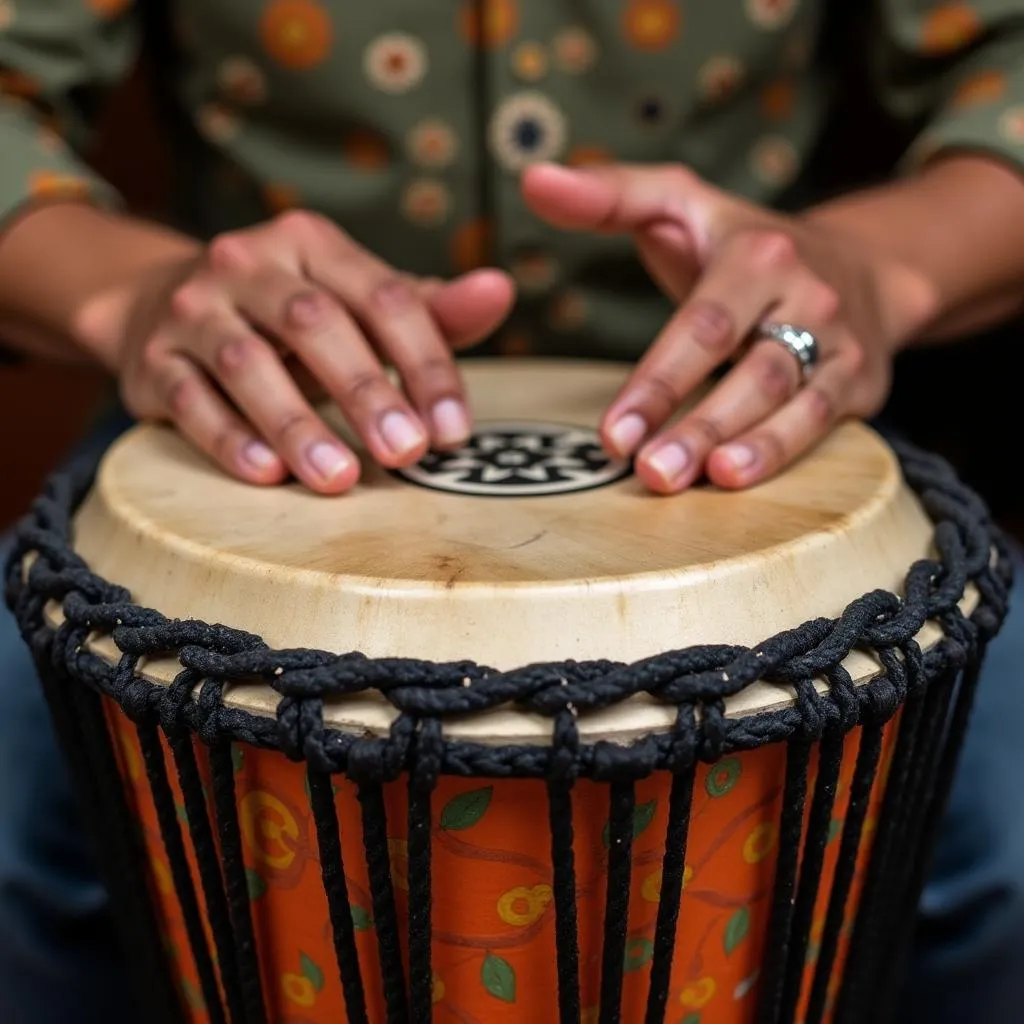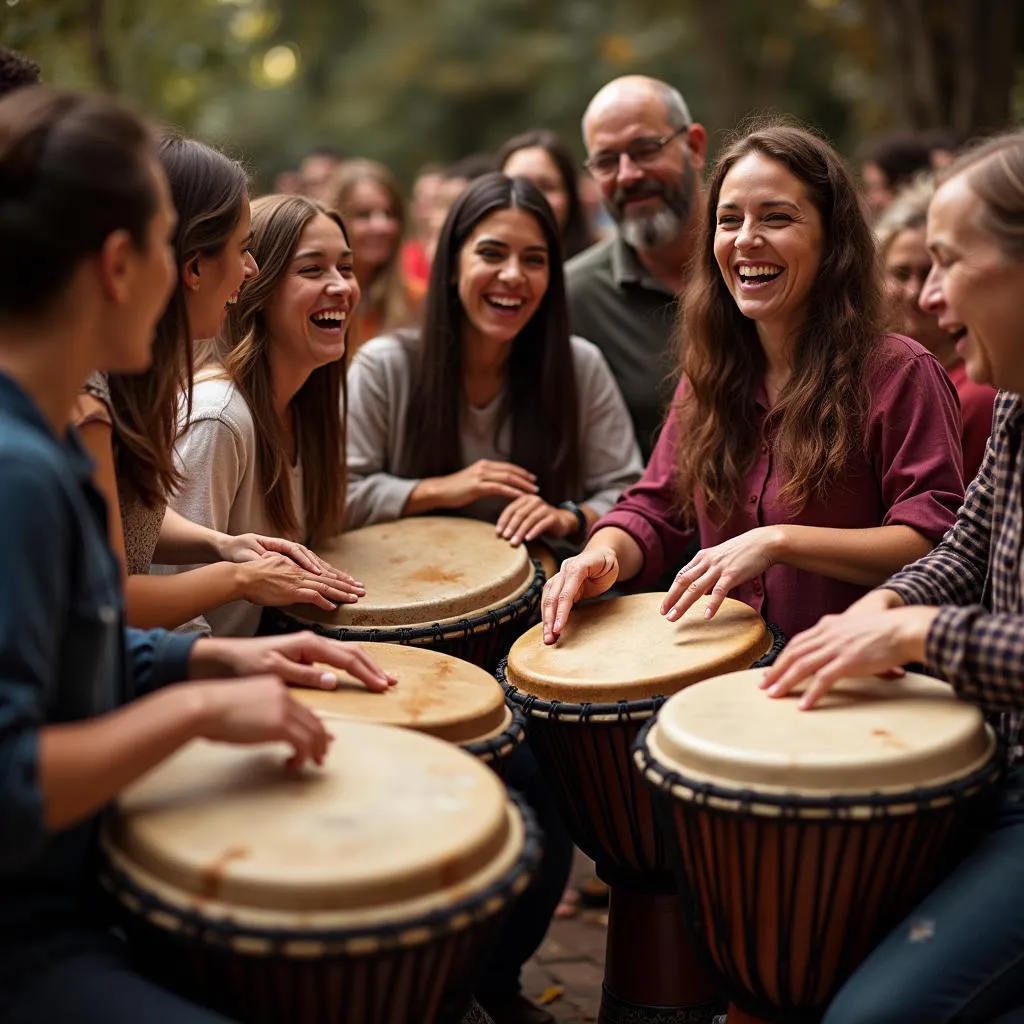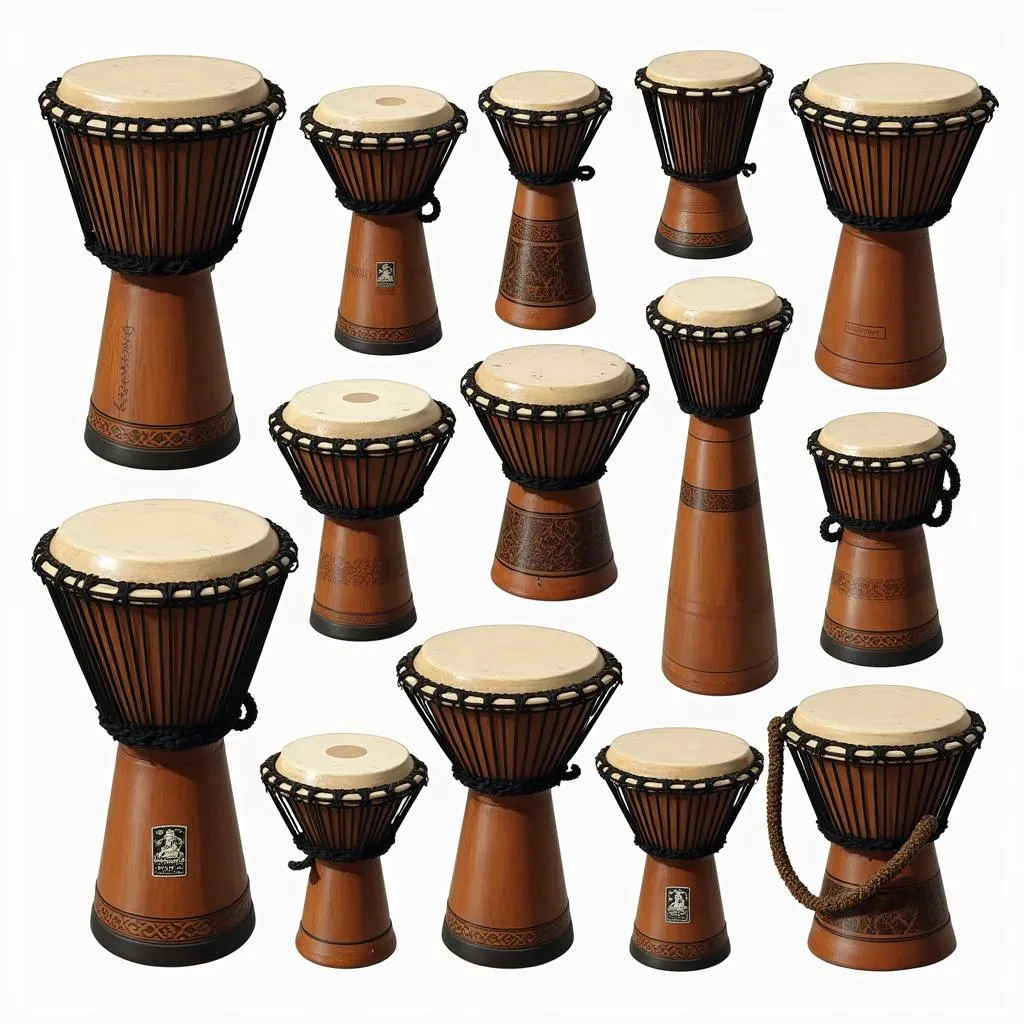10 Fascinating African Djembe Drum Facts
The African djembe drum, with its rich history and infectious rhythms, has captivated audiences worldwide. But how much do you really know about this iconic instrument? Beyond its captivating sound, the djembe holds a fascinating story that connects us to the heart of African culture. Let’s explore 10 intriguing facts about this beloved drum.
From Ancient Origins to Modern Popularity
The djembe drum originates from West Africa, where it has been played for centuries. Its creation is attributed to the Mandinka people, specifically the blacksmith caste, who were known for their metalworking skills. The name “djembe” comes from the Mandinka words “djé” and “bé,” meaning “to gather” and “peace,” respectively, reflecting the drum’s role in bringing people together.
 African djembe drum being played
African djembe drum being played
Carved from Sacred Wood
Traditionally, djembe drums are carved from a single piece of hardwood, most commonly lenke or djelliba wood. These woods are known for their durability and resonant qualities, producing the djembe’s distinctive sound. The process of carving a djembe is an art form in itself, passed down through generations of skilled artisans.
A Symbol of Community and Celebration
Throughout West Africa, the djembe plays a central role in community life. It is used in a wide range of social gatherings and ceremonies, from weddings and funerals to religious rituals and celebratory dances. The djembe’s powerful rhythms are believed to have the ability to connect people to the spirit world and evoke powerful emotions.
 African djembe drum circle
African djembe drum circle
Three Distinct Tones
The djembe is a goblet-shaped drum, typically played with bare hands. It produces three main tones: a bass tone, a tone tone, and a slap tone. The bass tone is produced by striking the center of the drumhead with the flat of the hand, while the tone tone is produced by striking the edge of the drumhead with the fingertips. The slap tone is a sharp, high-pitched sound created by striking the edge of the drumhead with the palm of the hand.
More Than Just a Drum
The djembe is more than just an instrument; it is a way of life. In many West African cultures, learning to play the djembe is an integral part of growing up, and master drummers are highly respected members of society. The djembe represents a rich cultural heritage that has been passed down through generations.
Global Recognition and Popularity
In the 20th century, the djembe gained international recognition, thanks to the efforts of musicians like Guinean drummer Mamady Keïta. Keïta’s electrifying performances introduced the djembe to a wider audience and helped to popularize it as a solo and ensemble instrument.
A Versatile Instrument
While the djembe is traditionally associated with West African music, it has also been adopted by musicians in other genres, including jazz, pop, and world music. Its versatility and distinctive sound have made it a popular choice for percussionists around the world.
 Djembe drum types and sizes
Djembe drum types and sizes
A Drum for All
The djembe is an instrument that can be enjoyed by people of all ages and skill levels. Whether you are a seasoned musician or a complete beginner, there is a djembe out there for you. Its accessibility and infectious rhythms make it a great choice for group drumming classes and workshops.
A Healing and Therapeutic Tool
In recent years, the djembe has also been recognized for its healing and therapeutic qualities. The rhythmic vibrations of the drum are believed to have a calming effect on the mind and body, and djembe drumming circles are often used in music therapy settings.
A Continuing Legacy
The djembe drum continues to evolve and adapt to the times. Modern djembe makers are experimenting with new materials and designs, while contemporary drummers are pushing the boundaries of the instrument’s musical possibilities. The djembe’s rich history and enduring appeal ensure that it will continue to captivate audiences for generations to come.
In conclusion, the African djembe drum is much more than just an instrument. It is a symbol of community, celebration, and cultural heritage. From its ancient origins to its modern popularity, the djembe continues to inspire and unite people around the world.